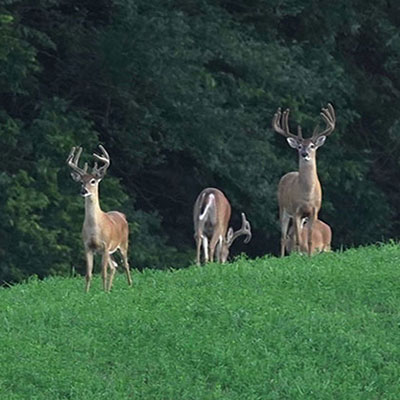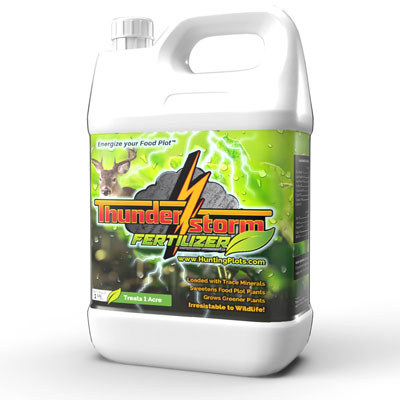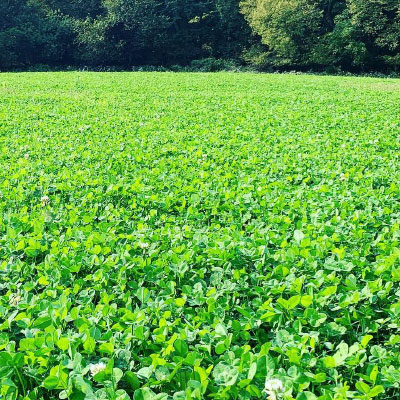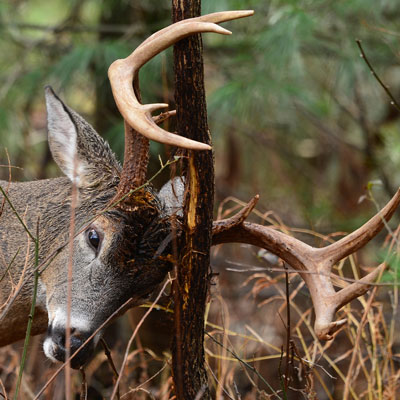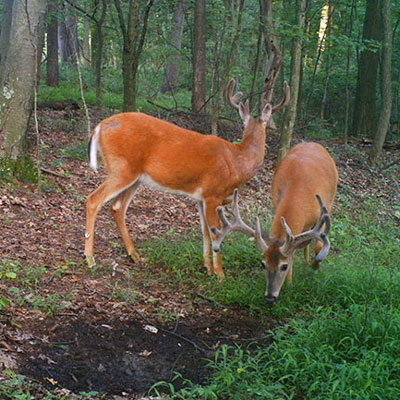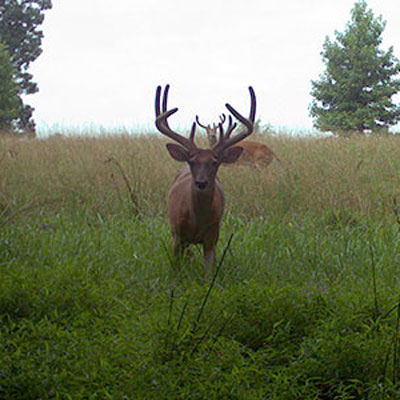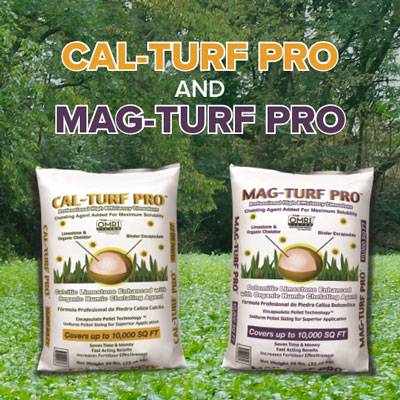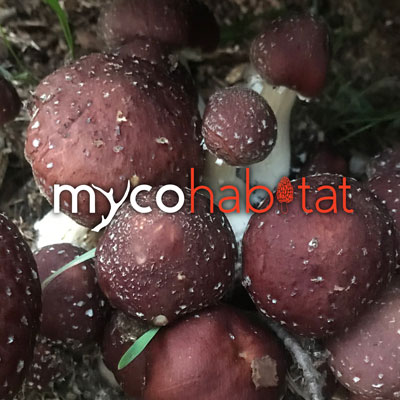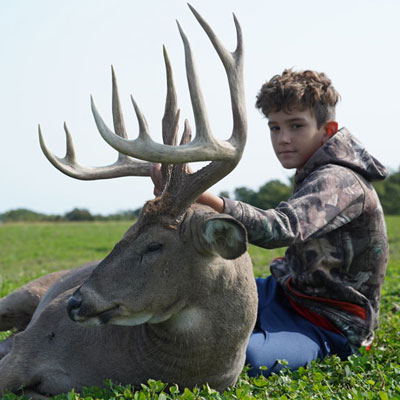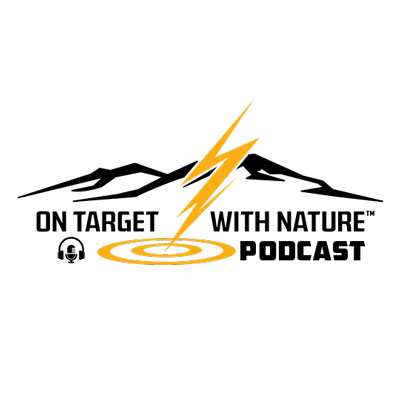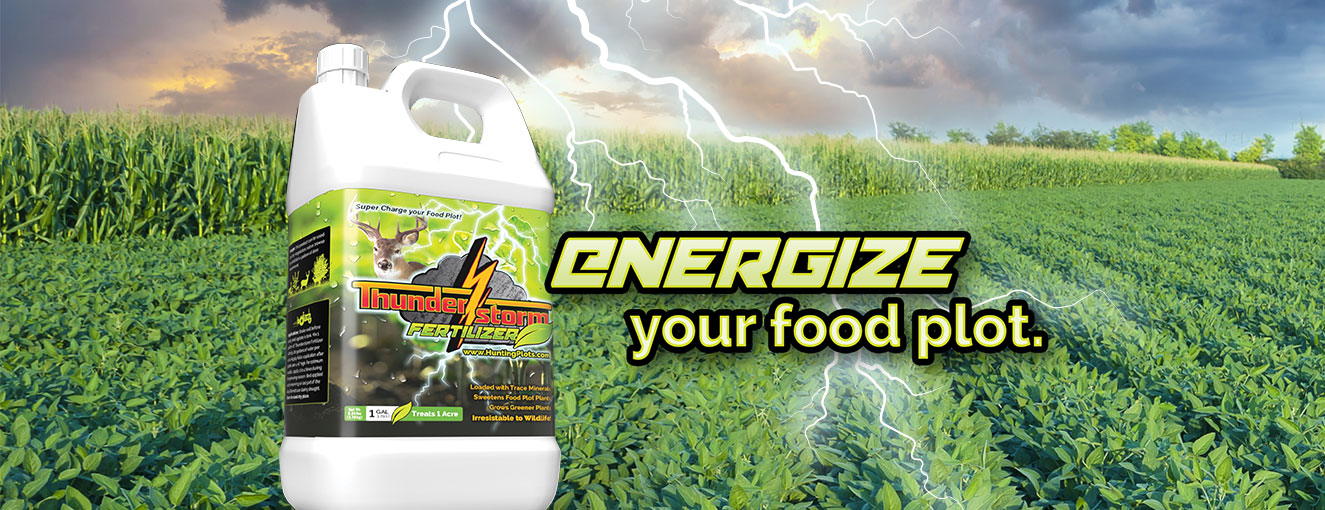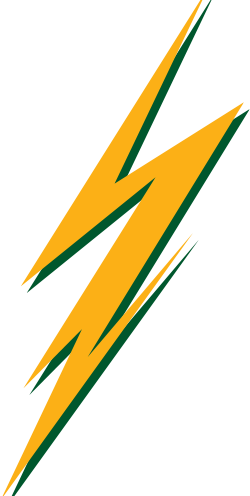
Episode 07 | March 27, 2023 | John Stoltzfus |
(More Episodes)
Mineral Sites
Welcome to this week's On Target with Nature Recording, brought to you by John Stoltzfus. Yes, we are only four days away from April, and today I will share some target items that we can focus on for the next month and what we should be working on to get the most out of our property and help our wildlife.
So, in areas where it is legal, I would recommend - definitely, if you haven't yet - I'd like to get 'em in March, but there is a couple spots that I haven't gotten out in and gotten the mineral sites refreshed or if there's any new properties to get your new plots or your new mineral sites established. So most antlers now are shed, and the new ones are already starting to form. And to understand a little bit about how those antler work when that hits a certain photo cell period, those antlers, their testosterone drops, and those antlers shed and fall off.
So now they're gonna first replenish the mineral to their bone structures that has been depleted from the rut and the hard winter, which we didn't have here - some areas up north, they would've had a fairly fairly hard winter with a lot of snow and so on - but here in southeast PA, we had a very, very mild winter and that should help with their stress, and I've seen bucks hold on to their antlers later, which is a good thing. That shows that you had a low stress period - good food sources. So now helping those new antlers to understand that antlers are a bone structure, and we all know that calcium and phosphorus are your most important minerals in bone to help good, strong bones.
I'm gonna just a share an illustration of a customer. He was from Perry County and they had thrown their own mix together - and it was a little cheaper, if they didn't figure their time in blending it and buying the different ones. So you can definitely save money, but here's the catch: Do you know what ratios that you should mix that at? If you have a good formula that you can mix your own minerals, then by all means go for it. But make sure that you are putting it in at the right ratios. So this particular incident, they noticed that they were having antlers that were being broken off, and it was not working. So he switched to the WhitetailMaxx mineral and he came in with a set of, it was over 140 - I can't remember exactly what the score was - but when I picked up the antlers, just the weight of them I was impressed. It was it was definitely a difference.
So there's lots of other good minerals out there. When it comes to minerals, I always tell people really, to know for sure, you have to try it and let the deer be the judge. They will always tell you which ones that are most needed 'cause they know what they need.
So when we start a mineral site, I usually like to take a rake - like a metal garden rake - and rake a 4ft x 4ft area down to dirt - or soil I should say. And then cut about a 4ft log, preferably one that's partly rotted - that's been sitting there for a while - and then I'll take and rake the bark off of it, make sure that it's down to the rotted out part. I'll put that in the middle, and then I'll take about 20 pounds - if it's a new site - I'll use 20 pounds to start it and spread it evenly across the cleared area and across the log. And then I'll take a trophy rock - the Redmond trophy rock - and I'll put that right in the center.
Now what that gives them is a balance of the phosphor and calcium and the trace minerals that are in the WhitetailMaxx, plus all the trace minerals that are in the trophy rock - 65+ different trace minerals that are naturally mined outta Utah. It's something that you can't buy individually. So it's a good supplement to their existing diet. And then I will just refresh that every month. I'll check 'em every couple months - maybe month and a half - I'll check 'em just to make sure that there's still mineral there.
So the WhitetailMaxx, the reason that we work it into the soil a little bit, I'll take a rake and lightly rake it in, is because I don't want it to cake up. With that high calcium and phosphorus, it can crust and it needs to react with the soil a little bit to - it's gotta react with the soil to release the calcium and phosphorus, and they like it better when it's not crusted.
The WhitetailMaxx is formulated to be a free choice mineral for wild deer. It is higher in phosphorous than most minerals that I have seen, and less salt than most competing minerals. It does not have vitamins in it. That is the biggest question I have: How does it compare with Maximizer? It does not have the vitamins and some of those things in that the Maximizer does, and there's a reason for that. If you dump vitamins on the ground - as a free choice - within days, they're gonna break down and decompose. A vitamin is not stable like minerals are. Minerals is a more stable. There's minerals in the soil naturally. There's not vitamins in the soil. There's vitamins in plants, formed in the plant growth. So if you want to use vitamins, then put it through a feeder, not on the ground because you really aren't gonna get the value of your money spent if you dump it on the ground - so therefore is why we don't have vitamins in the WhitetailMaxx.
When looking to get vitamins to deer, you would be better off to to feed it through a feed. And we do have the Whitetaill Crunch that a lot of guys have been using this past winter with some good results, and that's a way to get some extra vitamins to 'em in the off season when there's no green plants and other ways for 'em to get it. So another way to get the minerals and vitamins to deer or wildlife is through food plots, and that is still the most effective way of making a difference in their health. Vitamins and minerals in a plant-form are much more digestible than than trying to put it through supplemental minerals.
We have heard from quite a few customers over the last 10 years of noticing that mineral sites getting hit much less after they got on the program of putting out food plots. So, again, if you are putting out food plots, that is another thing that you want to look at to add diversity. The more different plants you plant, or you put in - the different diverse seed blends that you have - the more minerals, the more different vitamins and different things you'll be providing to that and their diet. So yeah, that is another step that we want to look at here in April, is to plan what we're gonna plant this year.
So, minerals is #1. #2 I'll have on my list here, is to use a foliar fertilizer on all your clovers, especially at spring green up. And this is something that you can do legally in the areas where there is CWD, and you it's not legal to put out mineral sites - supplemental mineral sites. So remember it is more effective through the plant, anyway. So what we use is that the Thunderstorm Fertilizer sometime in April on all our clover plots and we also hit all our fall plots that green up in the spring, like your Rage and 5-Star Forage, the rye, triticale, oats, wheat, your annual clovers that come back. If you can give them a growth push and help convert those nitrates to sugars it will sweeten up the plants and make 'em more attractive. And if you wanna make a difference in antler growth, then you want them consuming as much of that high protein summer - and spring, especially - early green-up - food sources as you possibly can.
So we got the mineral sites, we have the planning for our food plots, we have spraying our plots with a foliar fertilizer. And then for that, when we're planning to plant for the summer or this whole year, plan to plant as much diversity of food sources as you can. If you only have a couple small plots, then go with mixes that have a bunch of different stuff in it. That will do several things for you. It'll help them - it'll not only help them - encourage them to spend more time in your plot because they're gonna go through browsing the different plots - the different food sources, and they have to search for that, those different ones. They might pick out peas, for instance, and now they have to go through that plot and find those peas, which will be more time spent on your property. So this will also help attract and hold more wildlife on your property.
So #4 is scouting for turkey season. And while you're doing that, you can get two things done in one shot and that is shed hunting. So as you're looking for areas where they're roosting, and strut zones, and where they're feeding - looking for those turkey scratches - also keep your eye out for sheds. And take time and get into those bedding areas where you have designated bedding areas. Any switchgrass plantings are great areas to find sheds between bedding and food, travel corridors, areas like that.
And now's the time to put together a strategy for that opening day of turkey season or whenever your schedule allows you to go chase those thunder chickens. So, for those who understand Dutch or German, the German word for turkey is welshingle. Just thought I'd share that with you. I found it interesting, some of those words we don't use, we say turkey in our Pennsylvania Dutch language, but welshingle is the German word for turkey.
So #5, I would encourage you if there's anybody that's interested, April 1st our field day tickets will go on sale, and I'll just give you the details again here. I would encourage you to order them in April if you want to come. I do believe that we will sell out. I will be putting an ad in, in April or beginning of May. And I want to give all our listeners or our existing customers first chance at it so that they don't miss it.
The event will be at 533 Mt Pleasant Road in Pottstown. It is on Craig Shank's property. A lot of you who have come into the store know Craig, and we will be having it his house again - or his property. That is where we do a lot of testing, and you'll see the plots growing back of the Rage where we over-seeded some triticale to try to get a thick mat of cereal grains coming back this spring that we will then drill into and crimp down. So we have some new designs that we're gonna be testing there, new seeds that we'll also be planting to see how those work out.
So if you want tickets, please call (717) 989-6239 ext 1. (or visit the Annual Field Day page) The adult tickets are $75 each, and then children 14 and under are $30 $35 each. That includes the lunch - there'll be barbecued chicken and potatoes, and pretty much the same menu - there's gonna be coffee and donuts in the morning, there'll be ice cream after for dessert, and then the grand prize will be a full-property consultation with Jake Stoltzfus from Konica Forestry and myself, and that'll be given away that day as well. You will have to be present to win. There's gonna be children activities that they can learn some things about wildlife and plants and so on. And I look forward to all those who would wanna join us that day.
That'll wrap it up for this time. So until next time, I hope you get out - you get a chance - get out in nature and enjoy its many blessings.
More Episodes











